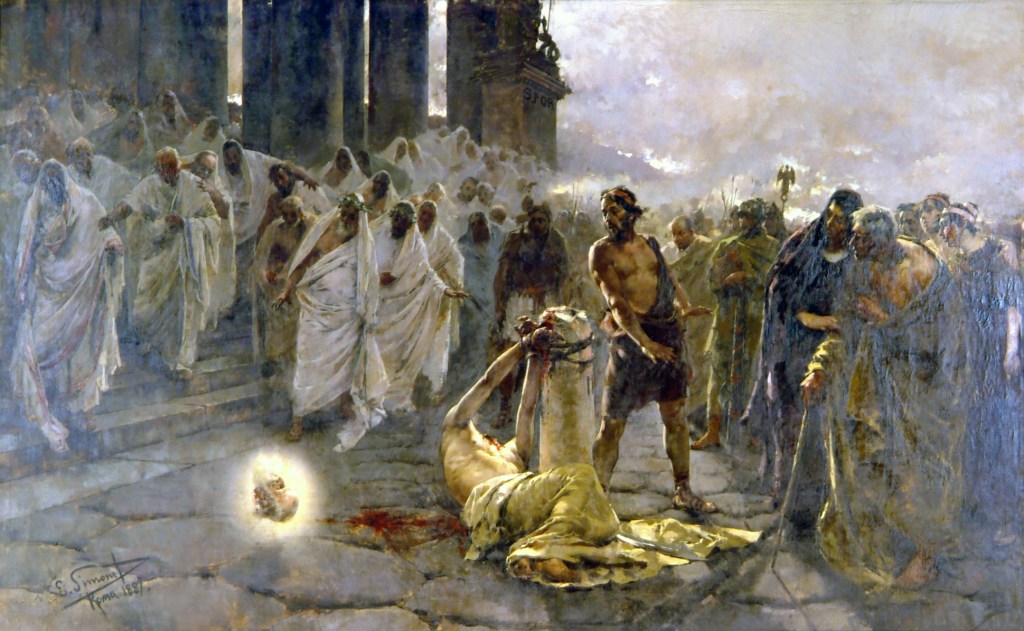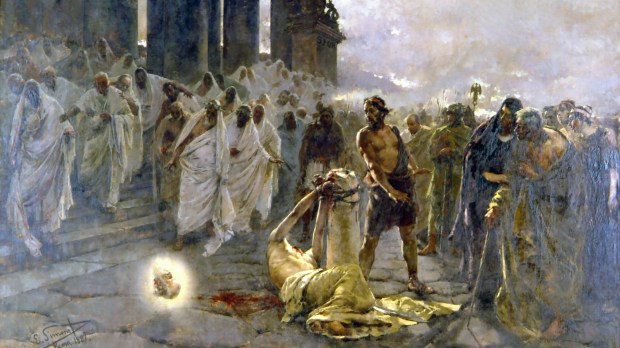The Bible does not say how the Apostle Paul died. But somehow, in his Second Letter to Timothy, Paul seems to be anticipating his imminent demise:
“For I am already being poured out as a drink offering, and the time of my departure has come. I have fought the good fight, I have finished the race, I have kept the faith. Henceforth there is laid up for me the crown of righteousness, which the Lord, the righteous judge, will award to me on that Day, and not only to me but also to all who have loved his appearing.”
2 Timothy 4:6
What we do know of Paul’s death, we know from the earliest pseudepigraphic series comprising the New Testament apocrypha, the Acts of Paul – a work that is purporting to be written by Paul himself, including letters, narratives, prayers, and apocalypses. One of the main sections of these apocryphal writings (which were declared antilegomena by Eusebius, in his Church History) is the Martyrdom of Paul.
The Martyrdom of the Holy Apostle Paul tells the story of Paul’s last days in Rome. The text claims that, as Nero learned that Paul had resurrected a young man, he feared that the Empire might be overthrown by the Christians. Allegedly, this was the event that precipitated the Neronian persecution of Christians in general, as well as the specific order to behead Paul. The Martyrdom claims that when Paul was beheaded, milk (and not blood) spurted from his neck.
Apocryphal as it is, the Beheading of Saint Paul is considered a pivotal moment in Christian history. As such, it has been a common motif in Christian art.
But perhaps one of the greatest images of this martyrdom ever painted is housed in the Cathedral of Málaga, in Spain.

The work of the noted Valencian painter Enrique Simonet Lombardo, the immense canvas vividly portrays the intense emotions of this moment. In a relatively bloodless scene (chances are Simonet never read the apocryphal work, so he knew nothing of the “milk” tradition), Saint Paul’s head is about to fall to the ground, shining bright, wrapped in supernatural light. The detailed rendering of the bladeless executioner’s hand adds a chilling sense of awe to the scene. Both members of the senate and commoners witness the killing, astonished.
Simonet’s painting serves as a powerful reminder of the sacrifices made by early Christians to spread their faith. It is not only a testament to the artistic skill of its creator, but also a tribute to the enduring legacy of Saint Paul and his unwavering commitment to the Christian message, as immortalized both in canonical and apocryphal writings. This masterpiece continues to inspire and move visitors to the cathedral of Málaga, inviting them to reflect on the lives of the many men and women who shaped the course of Christianity.



